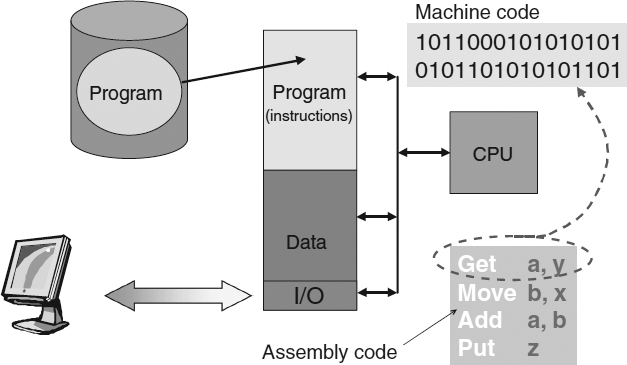11.7 THE JAVA ETHOS – A TALE OF TWO PARTS
Let's remind ourselves of how a computer works. Computers have more or less stuck to an architectural theme that was popularised by the PC (what we used to call the IBM-compatible PC).
Figure 11.15 shows the basic computer architecture that revolves around the central processing unit (CPU), like a Pentium or Power PC, which can crunch numbers loaded from memory and output results back to memory across a bunch of printed-circuit wires called a bus22. Certain memory locations are special because they also enable the CPU to interface with peripherals, like a graphical display. Writing certain values to the display memory will affect what appears on each pixel on the screen and so in this way a software program can write a whole sequence of pixel values in order to control what the screen display. The operating system (OS) is a program that runs on the CPU and can run utility code to manage how this area of memory gets updated and in doing so also provide a more meaningful interface, like a windowing one, to other programs running on the CPU. These applications, instead of writing to the display memory, will write values to a portion of memory monitored by the window-utility part of the OS, which in turn writes to the display memory in a way that manages a windowed look-and-feel.

Figure 11.15 Basic computer architecture.
For the CPU to know ...
Get Next Generation Wireless Applications: Creating Mobile Applications in a Web 2.0 and Mobile 2.0 World, 2nd Edition now with the O’Reilly learning platform.
O’Reilly members experience books, live events, courses curated by job role, and more from O’Reilly and nearly 200 top publishers.

